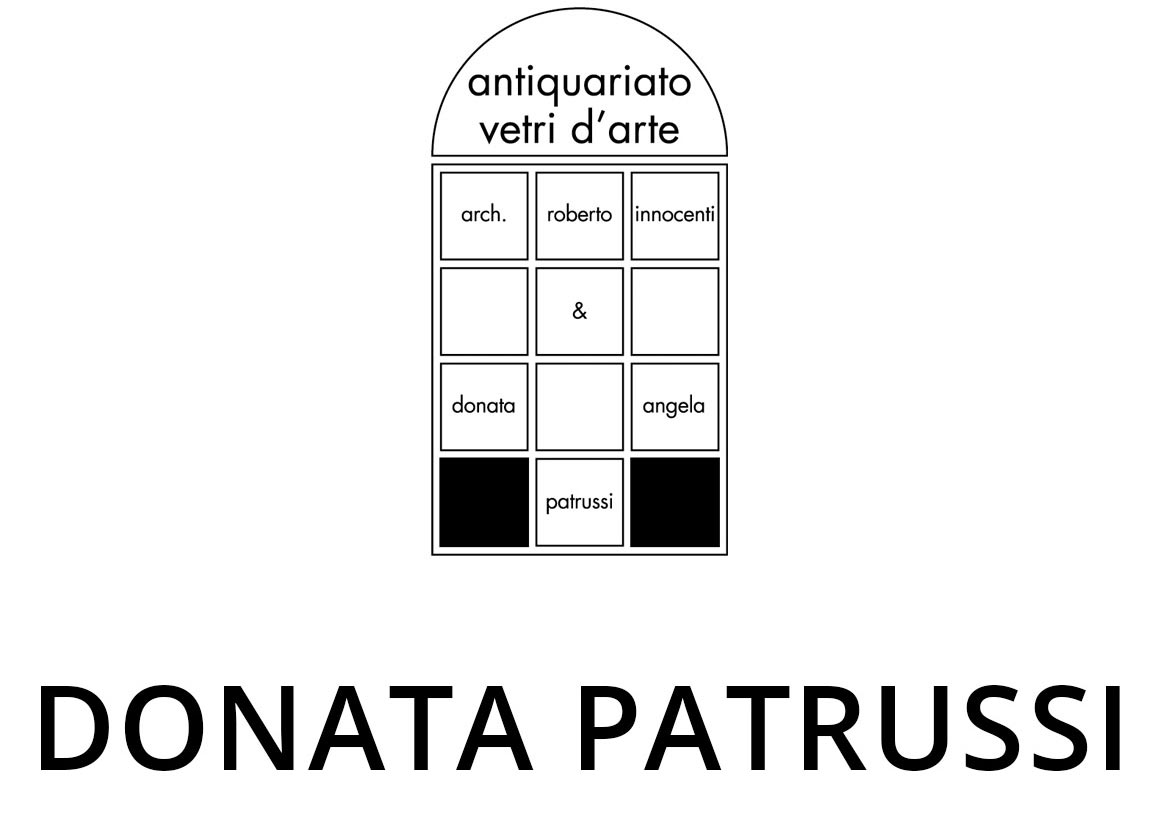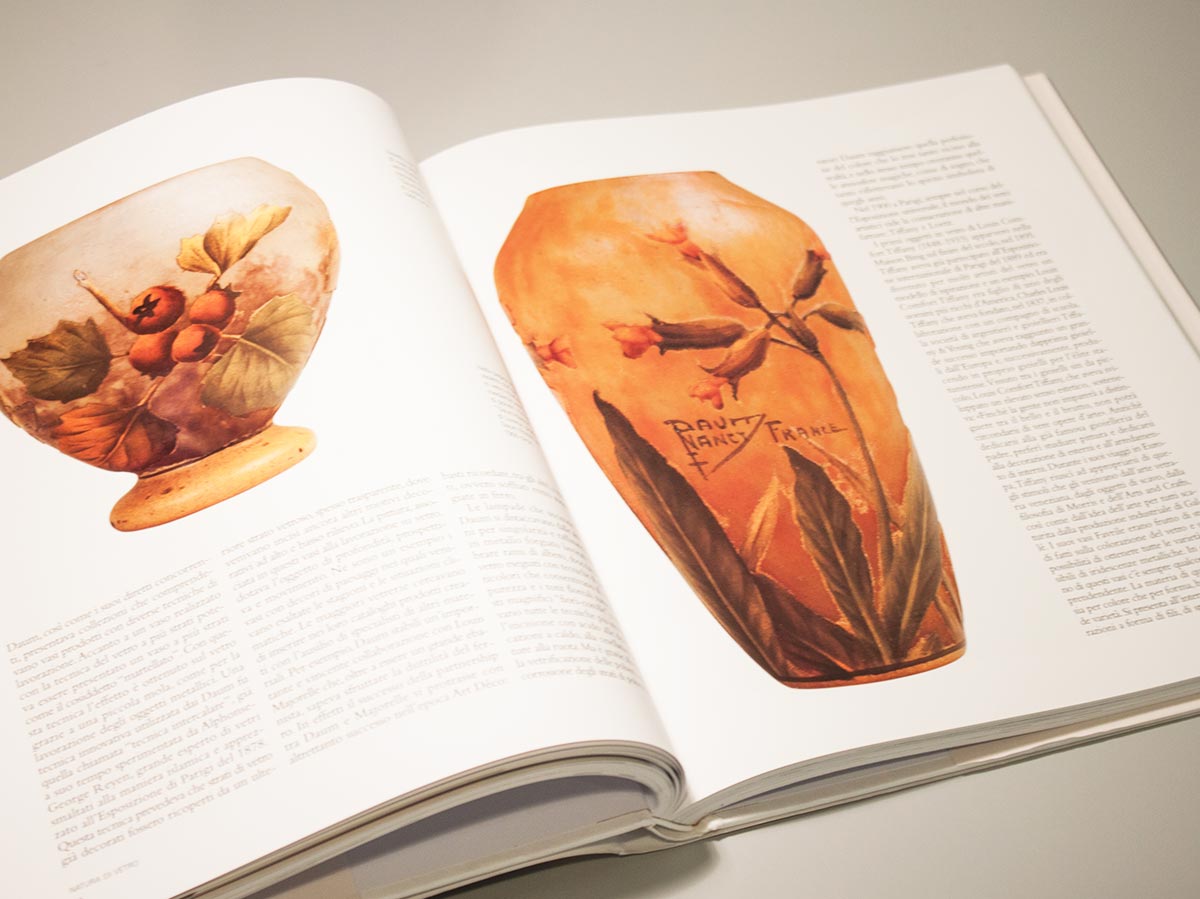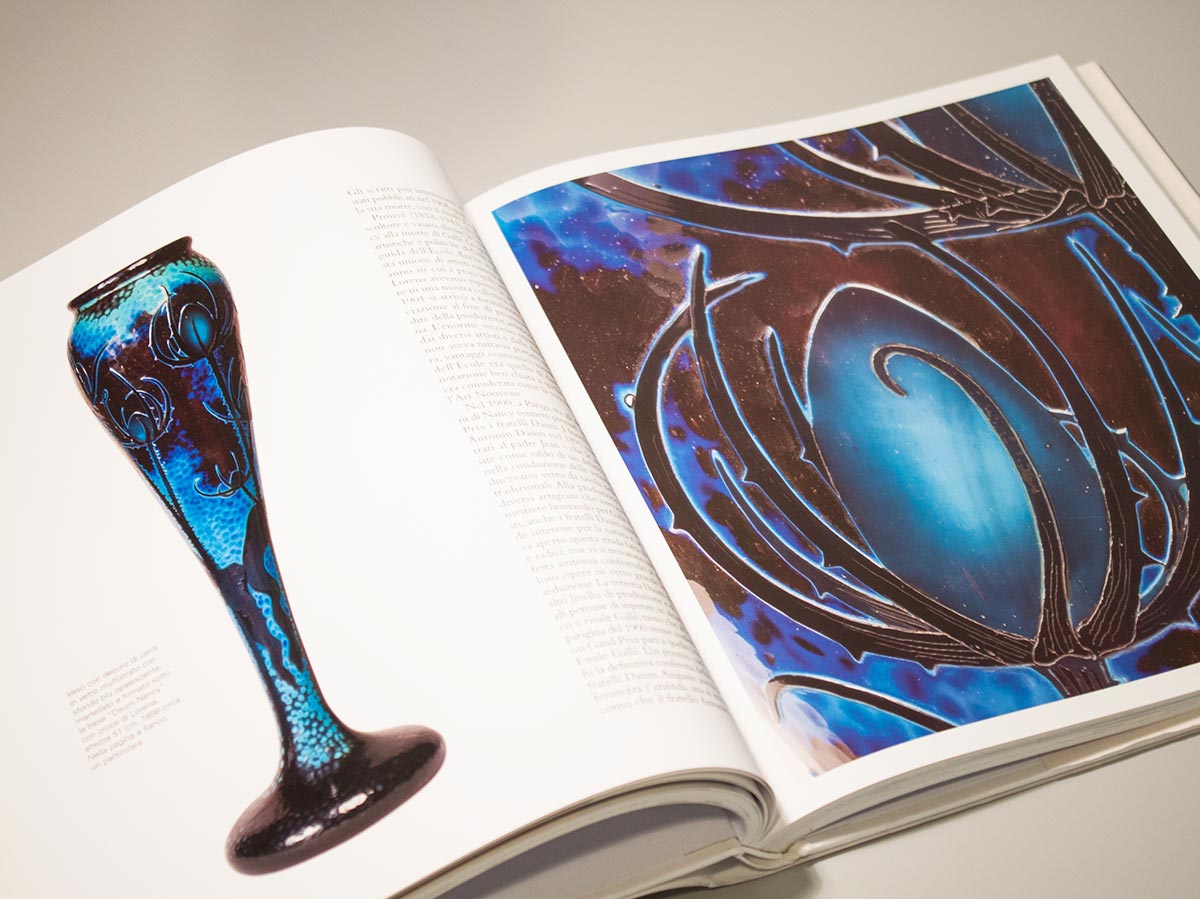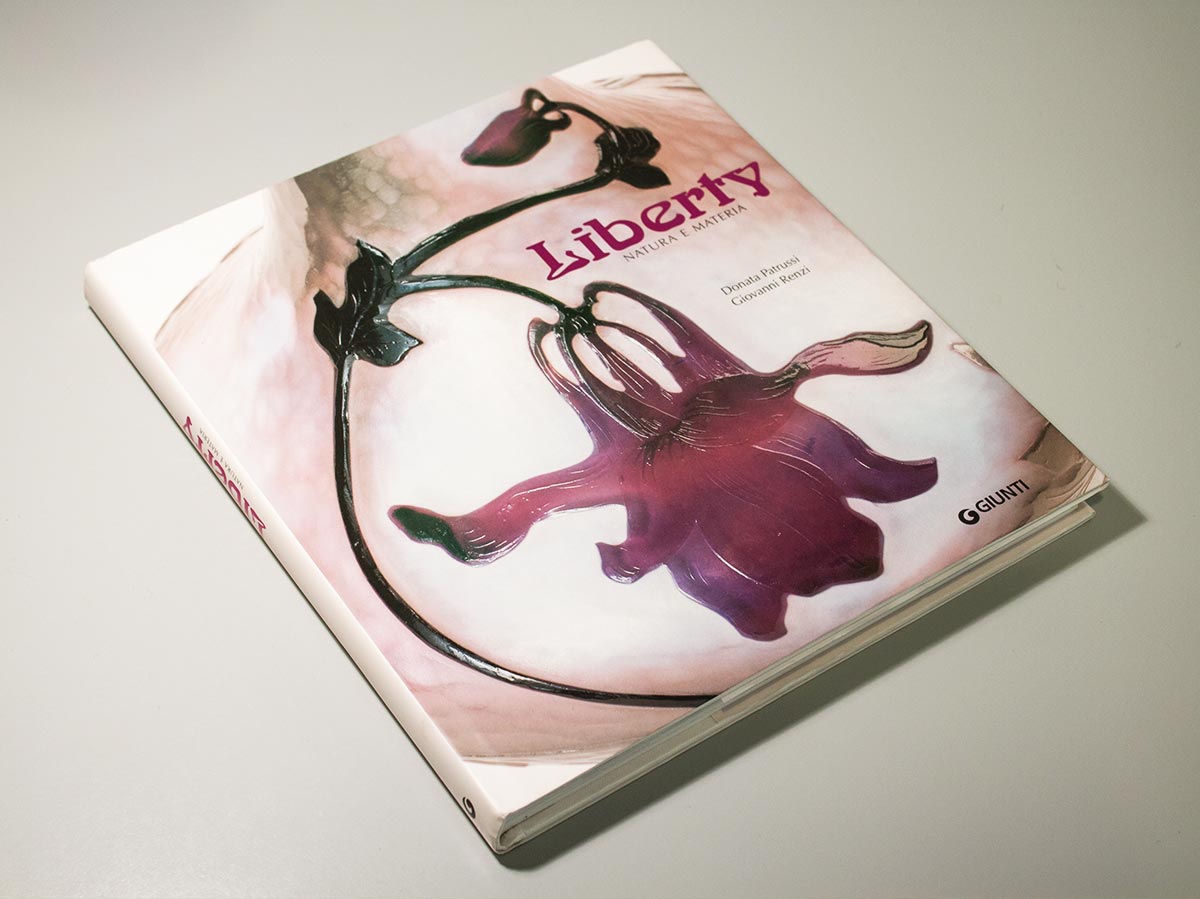DONATA PATRUSSI
and Angela Patrussi

Donata Patrussi is the owner of the Roberto Innocenti Gallery in Florence, and has worked in the antiques field since 1982, specializing in the Decorative Arts of the 20th Century, ranging from turn-of-the-century pieces to the design of the 1950s and 60s. Her attention is directed particularly to Italian, French, Austrian and American glassworks. Thanks to her experience in this specific field, the internal department handles the most important names in Art Nouveau and Art Dèco, such as: Emile Gallè, Daum, Charles Schneider, Renè Lalique, Louis Comfort Tiffany Favrile Glass, Loetz, amongst other manufacturers and artists.
Her appraisals are recognized in the Italian and international antique worlds, and she has a loyal clientele that has followed her throughout the years. She is the coauthor of the book “Liberty, Nutura, e Materia,” published in Italy by publishing house Giunti and in France by publishing house Grund. She has also collaborated in many other publications within the field, and organized exhibitions on the subject.

30 years of passion and love for the decorative arts of the 20th century
Donata Patrussi is the owner of the Roberto Innocenti Gallery in Florence, and has worked in the antiques field since 1982, specializing in the Decorative Arts of the 20th Century, ranging from turn-of-the-century pieces to the design of the 1950s and 60s. Her attention is directed particularly to Italian, French, Austrian and American glassworks. Thanks to her experience in this specific field, the internal department handles the most important names in Art Nouveau and Art Dèco, such as: Emile Gallè, Daum, Charles Schneider, Renè Lalique, Louis Comfort Tiffany Favrile Glass, Loetz, amongst other manufacturers and artists.
Her appraisals are recognized in the Italian and international antique worlds, and she has a loyal clientele that has followed her throughout the years. She is the coauthor of the book “Liberty, Nutura, e Materia,” published in Italy by publishing house Giunti and in France by publishing house Grund. She has also collaborated in many other publications within the field, and organized exhibitions on the subject.
“Liberty,” (Art Nouveau) as told by
Publishing House GIUNTI
One of the most loved artistic movements, narrated through it’s own forms, it’s materials, and it’s presence in daily life.
The precious book, “Liberty, Natura e materia,” differentiates itself from many other works on the topic with it’s innovative approach. This is not in fact the customary anthology of the main works of the movement, and it is not a history of Art Nouveau. It is rather a book about the forms of Art Nouveau, it’s materials, it’s relationship with nature, and it’s penetration into daily life.
This original approach, much enhanced by the power of the images, can also be seen when scanning the chapters: the nature of paper, of tin, of iron, of glass, of cement, and so on. Naturally of course, the big names of the movement are included – from Gallé to Toorop, from Moser to Guimard and Daum – attention is often paid lesser-known but nonetheless impressive artists, and to to the objects they created, which are generally seldom seen, and in some cases previously unpublished.


“Liberty,” (Art Nouveau) as told by
Publishing House GIUNTI
One of the most loved artistic movements, narrated through it’s own forms, it’s materials, and it’s presence in daily life.
The invaluable book, “Liberty, Natura e materia,” differentiates itself from many other works on the topic with it’s innovative approach. This is not in fact the customary anthology of the main works of the movement, and it is not a history of Art Nouveau. It is rather a book about the forms of Art Nouveau, it’s materials, it’s relationship with nature, and it’s penetration into daily life.
This original approach, much enhanced by the power of the images, can also be seen when scanning the chapters: the nature of paper, of tin, of iron, of glass, of cement, and so on. Naturally of course, the big names of the movement are included – from Gallé to Toorop, from Moser to Guimard and Daum – and attention is often paid to lesser-known but nonetheless impressive artists, and to to the objects they created, which are generally seldom seen, and in some cases previously unpublished.
Donata Patrussi and Giovanni Renzi
THE AUTHORS
Donata Patrussi developed her passion for the decorative art of the Twentieth Century during her long stays in France and England. Expert and connoisseur of the applied arts of the Art Nouveau period, with a particular specialization in and attention to the glassworks of the French and Austrian schools, for over twenty years she has been the owner of two antique galleries in the historic center of Florence.
Giovanni Renzi, architect, is one of the greatest experts in curved beechwood furniture. He has written volumes on the Thonet production and on modern furniture . In 2004 he conceived and curated a monographic exhibition at the Thonet Museum in Friedberg, Austria, as well as the 2005 exhibition “Thonet” in Milan. He is a professor in universities and design schools, and is an advisor of the Thonet Vienna.
Donata Patrussi and Giovanni Renzi
THE AUTHORS
Donata Patrussi developed her passion for the decorative art of the Twentieth Century during her long stays in France and England. Expert and connoisseur of the applied arts of the Art Nouveau period, with a particular specialization in and attention to the glassworks of the French and Austrian schools, for over twenty years she has been the owner of two antique galleries in the historic center of Florence.
Giovanni Renzi, architect, is one of the greatest experts in curved beechwood furniture. He has written volumes on the Thonet production and on modern furniture . In 2004 he conceived and curated a monographic exhibition at the Thonet Museum in Friedberg, Austria, as well as the 2005 exhibition “Thonet” in Milan. He is a professor in universities and design schools, and is an advisor of the Thonet Vienna.








